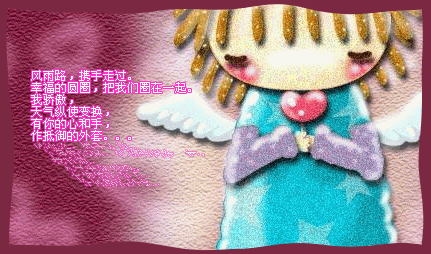|
|
小贴士:发图文帖,图片宽度请不要超过900像素,以保证最佳显示效果!
既然有人支持,那么我就来了,虽然支持的人很少的说!
History:
Chengdu was founded during the time of the Qin in the 3rd century BC, before the Qin's conquered all of China in 221 BC. Already at that time it was considerde to be important enough to be given the name Chengdu, which could be translated as " erfect City" or "Becoming Capital". Its location on a fertile but dry plain led the Qin to establish the world's first large-scale irrigation system, based on the diversion of the Min River. Still in operation today, this irrigation system is said to support the world's densest agrarian population. During the Han dynasty which followed, Chengdu first picked up its nickname"Brocade City", as it became the center of a thriving silk brocade industry. erfect City" or "Becoming Capital". Its location on a fertile but dry plain led the Qin to establish the world's first large-scale irrigation system, based on the diversion of the Min River. Still in operation today, this irrigation system is said to support the world's densest agrarian population. During the Han dynasty which followed, Chengdu first picked up its nickname"Brocade City", as it became the center of a thriving silk brocade industry.
Under the Qin and into the Han dynasty Chengdu was the seat of the commandery of Shu. After the collapse of the Han dynasty in 220 AD and the disintegration of imperial control, Chengdu became the capital of the kingdom of Shu. It was renamed Yizhou after it was brought under imperial control again during the Tang dynasty(618-907), but broke away again to become the capital of the Early and Later Shu kingdoms in the 10th century. At this time the merchants of Chengdu became the first in the world to use paper money. Chengdu has continued to prosper as an important city throughout its history, despite periods of strife under the Mongols in the 13th century and under the rebel Zhang Xingzhong in the 17th century.
World War Ⅱ brought an unexpected wave of prosperity to Chengdu as the Guomindang(Chinese Natinalist) party under Chiang Kai-shek fled to Sichuan Province to escape the invading Japanese forces. They brought with them businesspeople, workers and academics, who founded many of the industries and culture institutions which continue to make Chengdu an important center. The industrial base is very broad, including light and heavy manufacturing, aluminum smelting and chemicals. The textile industry remains important, with cotton and wool milling added to the traditinal silk brocade and satin production. There are three universities in Chengdu, including Sichuan University,and many scientific and technical schools, plus an institute for education of members of the Tibetan minority and a school of traditional Chinese medicine.
Language:
Chengdu natives speak a dialect of Southern Mandarin Chinese. Because of the dialect's soft tones, Chinese joke that it is the speech of baby girls, whereas the more rough-sounding dialect of nearby Chongqing is that of baby boys.
Culture:
The famous Tang dynasty poet Du Fu lived in Chengdu, and his thatched cottage remains one of the city's most popular tourist attractions.
In her memoir Wild Swans, Jung Chang tells of her coming of age during the Great Culture Revolution of 1966-76 while living in Chengdu.
Only 150km away from Chengdu, in the Himalaya Mountains, are some of the last wild giant pandas left on earth. Just outside of Chengdu is the Panda Research Center where scientists hope to breed enough captive pandas to ensure the survival of the species.
这是我考雅思时候的一些资料,大家先凑合看吧!哈哈!
打英文资料还是比中文累多了! |
|
 爱是一种感受,即使痛苦,也会觉得幸福;
爱是一种体会,即使心碎,也会觉得甜蜜;
爱是一种经历,即使破碎,也会觉得美丽;
......
爱是一种感受,即使痛苦,也会觉得幸福;
爱是一种体会,即使心碎,也会觉得甜蜜;
爱是一种经历,即使破碎,也会觉得美丽;
...... 爱是一种感受,即使痛苦,也会觉得幸福;
爱是一种体会,即使心碎,也会觉得甜蜜;
爱是一种经历,即使破碎,也会觉得美丽;
......
爱是一种感受,即使痛苦,也会觉得幸福;
爱是一种体会,即使心碎,也会觉得甜蜜;
爱是一种经历,即使破碎,也会觉得美丽;
...... 爱是一种感受,即使痛苦,也会觉得幸福;
爱是一种体会,即使心碎,也会觉得甜蜜;
爱是一种经历,即使破碎,也会觉得美丽;
......
爱是一种感受,即使痛苦,也会觉得幸福;
爱是一种体会,即使心碎,也会觉得甜蜜;
爱是一种经历,即使破碎,也会觉得美丽;
...... 爱是一种感受,即使痛苦,也会觉得幸福;
爱是一种体会,即使心碎,也会觉得甜蜜;
爱是一种经历,即使破碎,也会觉得美丽;
......
爱是一种感受,即使痛苦,也会觉得幸福;
爱是一种体会,即使心碎,也会觉得甜蜜;
爱是一种经历,即使破碎,也会觉得美丽;
...... 爱是一种感受,即使痛苦,也会觉得幸福;
爱是一种体会,即使心碎,也会觉得甜蜜;
爱是一种经历,即使破碎,也会觉得美丽;
......
爱是一种感受,即使痛苦,也会觉得幸福;
爱是一种体会,即使心碎,也会觉得甜蜜;
爱是一种经历,即使破碎,也会觉得美丽;
...... 爱是一种感受,即使痛苦,也会觉得幸福;
爱是一种体会,即使心碎,也会觉得甜蜜;
爱是一种经历,即使破碎,也会觉得美丽;
......
爱是一种感受,即使痛苦,也会觉得幸福;
爱是一种体会,即使心碎,也会觉得甜蜜;
爱是一种经历,即使破碎,也会觉得美丽;
...... 爱是一种感受,即使痛苦,也会觉得幸福;
爱是一种体会,即使心碎,也会觉得甜蜜;
爱是一种经历,即使破碎,也会觉得美丽;
......
爱是一种感受,即使痛苦,也会觉得幸福;
爱是一种体会,即使心碎,也会觉得甜蜜;
爱是一种经历,即使破碎,也会觉得美丽;
......